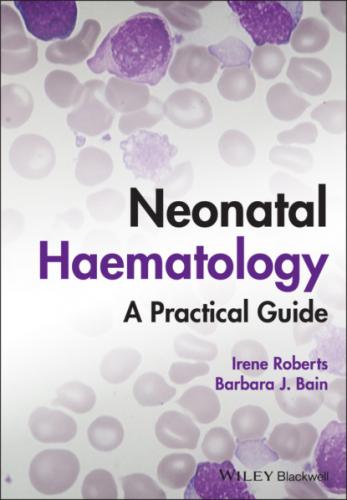Blood volume
The normal blood volume at birth varies with gestational age and the timing of clamping of the umbilical cord.79 In healthy term infants, the average blood volume is 80 ml/kg (range 50–100 ml/kg); however, this can be increased by up to 25% by late clamping of the cord.79 Estimates of the blood volume in preterm infants show a slightly higher range of 85–106 ml/kg, largely due to an increase in plasma volume.80–82
Folic acid and vitamin B12
In term and preterm babies of normally nourished mothers, stores of folic acid and vitamin B12 are adequate at birth and are maintained after birth in term neonates.83 However, infants that are breastfed and born to mothers who are vitamin B12 deficient, either due to vitamin B12 malabsorption or because of a strict vegetarian diet, are at high risk of developing severe vitamin B12 deficiency at 4–8 months of life. The prevalence of vitamin B12 deficiency at birth varies in different countries from less than 1 in 100 000 in the USA to 1 in 3000–5000 in European countries where neonatal screening studies have been performed.84–87 Although these infants are asymptomatic in the neonatal period, they develop progressive anaemia and neurological problems over the following months.88 Although the anaemia is rapidly reversible with intramuscular vitamin B12, persistent neurological impairment has been reported,89 leading some to recommend neonatal screening for presymptomatic identification of vitamin B12 deficiency.90 In preterm infants, folic acid reserves are lower at birth and are depleted more quickly than in term neonates, causing deficiency after 2–4 months if the recommended daily intakes are not maintained. The recommended daily intake for folic acid in preterm neonates is 25–100 μg/kg.91 As preterm formula milks and breast milk fortifiers provide sufficient folic acid to prevent folate deficiency in preterm infants,92 further supplementation is not required unless there is chronic haemolysis.
Leucocytes in the fetus and newborn
The leucocytes that form the human blood and immune system in the developing fetus start to appear in the peripheral blood during the first trimester.93 Monocytes and lymphocytes appear in fetal blood by 8 weeks post‐conception, although initially in very low numbers. This is followed by the appearance of neutrophils and eosinophils from around 14–16 weeks post‐conception, once haemopoiesis begins to be established in the bone marrow,9,16 increasing by the end of the third trimester to the lower end of the values reported for leucocyte counts in term neonates. Blast cells are a normal feature in fetal blood, particularly in the second trimester, but are not usually greater than 10%.94
Apart from alterations in the numbers of white blood cells in response to infection, leucocyte disorders are not common in neonates. Nevertheless, some diagnostic dilemmas do present in the neonatal period, particularly when there is neutropenia or a rare disorder such as congenital leukaemia is suspected. Careful evaluation of leucocyte morphology can not only help to make an early diagnosis of bacterial infection but can also suggest the type of bacterial infection and provide rapid clues to the presence of congenital viral infection or a rare genetic or metabolic disorder (see Chapter 3). In addition, automated leucocyte differential counts are often inaccurate in neonatal samples, particularly in very preterm neonates, so that validation from a blood film is important.
In contrast to the gestation‐related differences in red cell morphology, leucocyte morphology (neutrophils, monocytes, eosinophils, basophils and lymphocytes) is the same in healthy neonates of any gestation as in adults.
Leucocyte production and function in the fetus and neonate
All of the same types of normal leucocyte found in older children can be seen in peripheral blood films of term and preterm neonates (Fig. 1.13), although their frequencies vary from those in older children and also vary both with gestational age and with postnatal age (see Table 1.2). Blast cells are the only cells commonly seen in neonatal blood films that are not usual in blood films from healthy older children or adults (Fig. 1.14).
Fig. 1.13 Blood film of a preterm neonate showing normal white cells – two neutrophils, an eosinophil and a monocyte. MGG, ×100.
Fig. 1.14 Blood film of a healthy preterm neonate born at 25 weeks’ gestation showing a neutrophil and a blast cell. MGG, ×100.
There is increasing recognition that leucocyte function in the fetus and newborn differs from that in adults95 and that this is almost certain to contribute to the increased susceptibility to infection in neonates, particularly in those that are extremely preterm.96 As the adaptive immune system only properly develops with antigen exposure after birth, neonates are specifically dependent on the innate immune system as a first line of defence against bacterial and fungal pathogens in particular.97 Remarkably, all of the cellular components of the innate immune system are established in the human fetus over a small number of weeks late in the first trimester and early second trimester of fetal life.16
Neutrophils
At birth, neutrophils are the most plentiful of the circulating leucocytes in healthy neonates, constituting 50–60% of the total circulating white cells, in both term and preterm infants.64,65,67 The absolute neutrophil count at birth is slightly higher in preterm neonates (averaging about 15 × 109/l) than in term neonates (averaging about 10 × 109/l),64 and in most preterm neonates (<28 weeks’ gestation at birth), the peripheral blood also often contains neutrophil precursors (metamyelocytes, myelocytes and promyelocytes) in small numbers, even when the baby is well (Fig. 1.15).
Neutrophils are produced almost entirely in the bone marrow during fetal life.16 The numbers of circulating neutrophils in fetal blood samples taken in the first and second trimester are low (0.1–0.2 × 109/l),94 most likely because so much of the bone marrow at this gestation is devoted to expanding B cell production.8 Thereafter, as granulopoiesis is established in the fetal bone marrow, the numbers of neutrophils gradually rise to reach over 2 × 109/l at the end of the third trimester. Nevertheless, the absolute neutrophil mass per kilogram is less than
